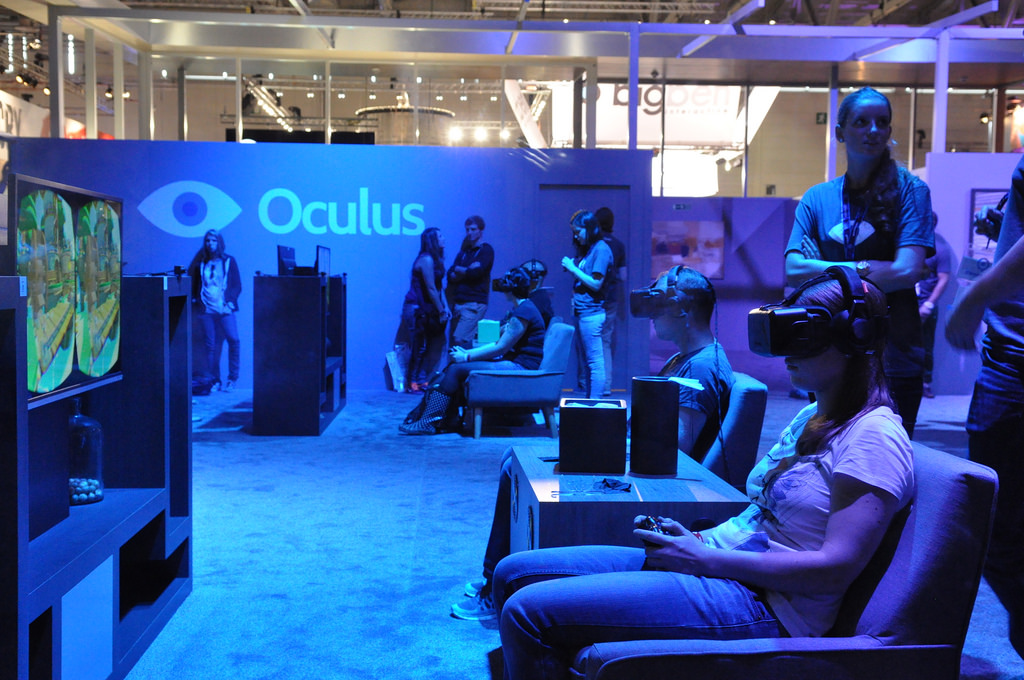Virtual reality has a surprisingly long history, but only recently has it begun to fulfil its promise.
How long the concept has existed depends on your definition of VR. For some, it’s defined as creating the illusion that we are present somewhere else – in which case you could argue that 360-degree murals from the nineteenth century, designed to fill your field of vision, are the earliest examples.
Others define VR as an artificial environment experienced through sensory stimuli generated by a machine or computer. A forerunner of this idea was the Sensorama machine, developed in 1952 by Morton Heilig. It was essentially a cabinet designed as a mini-theatre that stirred all the senses, getting the viewer fully immersed into a movie with stereo speakers, a stereoscopic 3D display, fans, a vibrating chair and even a smell generator!
Eight years later saw the arrival of the very first head-mounted display, the Telesphere. With no motion tracking, it lacked interactive functionality but within 12 months the invention of the Headsight had superseded it with a magnetic tracking system that followed the turn of your head to reflect what you see around a virtual space. In 1965, Ivan Sutherland wrote a paper called The Ultimate Display which became a blueprint for modern approaches to VR, introducing concepts such as software for augmented realities in which a computer controls the existence of matter.
Sutherland’s ideas were developed over time. Through the late 80s and 90s, Virtual Reality became a widely recognised term, but efforts to harness it as mass entertainment failed to escape the limitations of prohibitively high pricing and problems with user experience. Two companies attempted commercial VR products in the mid-90s, but both flopped – the Nintendo Virtual Boy was discontinued within a year of its launch while Sega’s VR Glasses never made it past the prototype stage.
Today, it seems that hardware has finally advanced to a point where VR is living up to our expectations and our imagination. The smartphone age has marked a sea change in the role of digital devices in our lives and VR has been swept along in its tide. Every technological function has become more accessible, more immediate and more affordable – including VR, no longer regarded as an unobtainable toy.
With three major product launches, 2016 was a landmark year for VR development. The Oculus Rift headset uses custom display and optics technology to provide stereoscopic 3D rendering, a massive field of view and ultra-low latency head tracking to immerse you in into your favourite game or VR movie. Front-loaded with plenty of sensors, the HTC Vive offers unrivalled escapism. With a superior combination of lighting and graphics, its level of immersion in a new 3D world is stronger than any other headset. The PlayStation VR is significantly cheaper than its two rivals and doesn’t require a high-powered and expensive gaming PC. Unsurprisingly, headsets have become a hugely popular way to enhance the gaming experience, heightening the creeping fear of first-person shooters and bringing the atmosphere of the casino to online gambling.
The potential of VR technology in its current form has yet to be fully realised. Some commentators have suggested that before long we will see the first 360-degree custom Twitch channel. Tech-savvy entertainment stars could take 360 cameras on tour and livestream the footage to fans, giving them a sense of being backstage, or even onstage!
Headsets are finally becoming comfortable and affordable enough for mainstream consumption, but could they become obsolete? The acceleration of progress in recent years suggest that in the not-too-distant future we could be experiencing VR via a sleek and unobtrusive set of spectacles, allowing us to sit in a coffee shop or dentist waiting room whilst fully immersed in a 3D world which is infinitely more exhilarating.
With opportunities to enjoy VR becoming ever more readily available, in future we could find ourselves spending more time in our virtual world than our real world.












